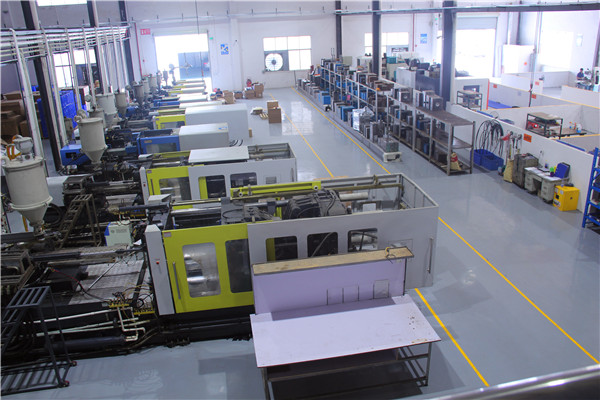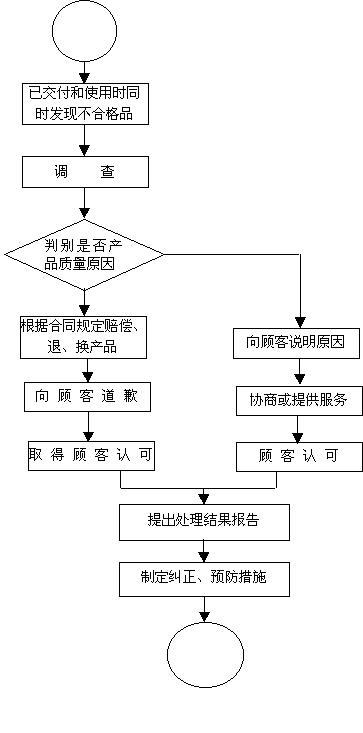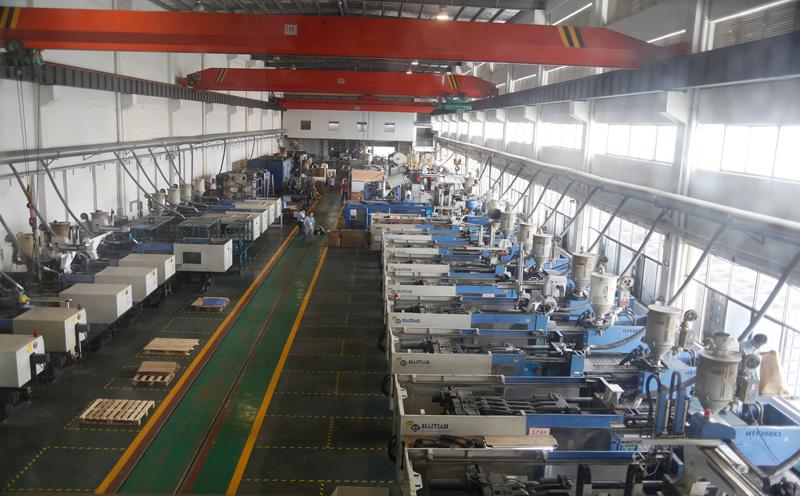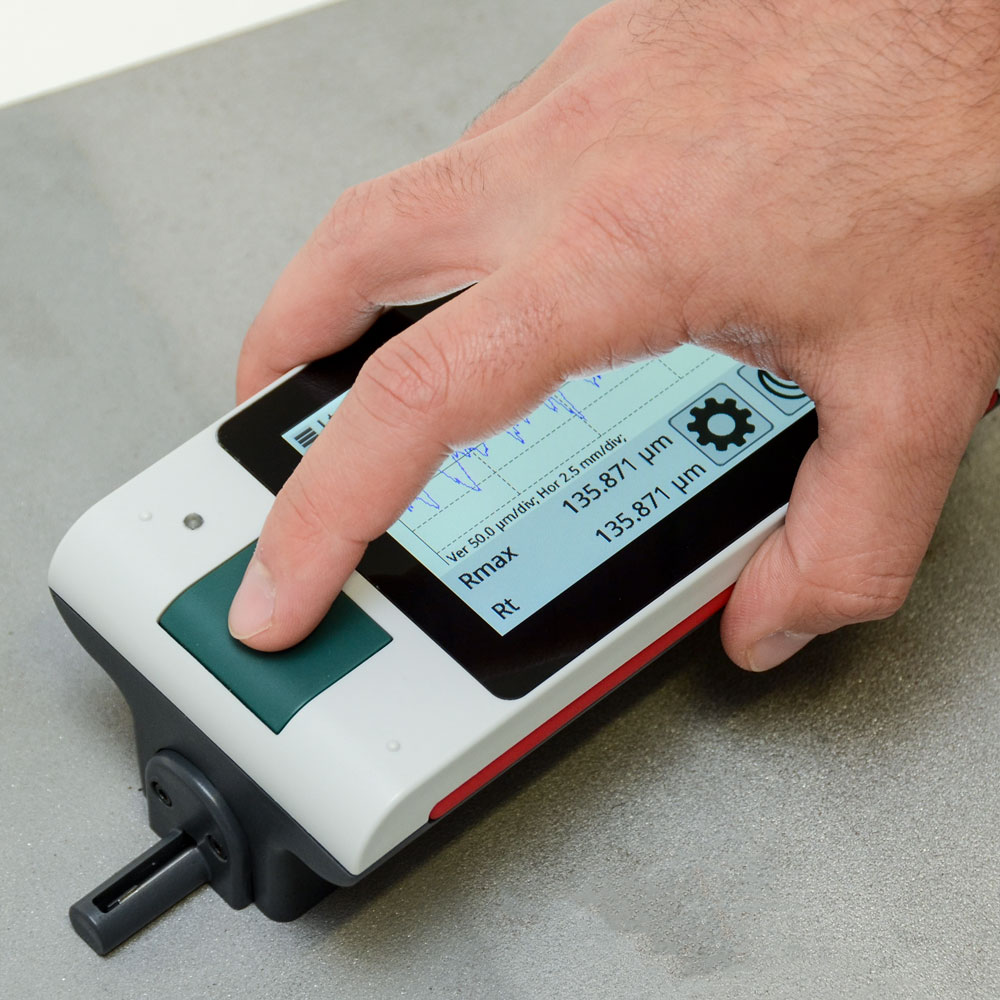Excellence in Injection Molding Company Quality Management
A comprehensive guide to implementing world-class quality management practices in the injection molding industry.

Introduction to Injection Molding Company Quality Management
Quality management in an injection molding company is a critical aspect that directly impacts product reliability, customer satisfaction, and overall business success. Beyond the traditional quality control measures such as raw material inspection, in-process quality control, finished product testing, measurement equipment calibration, customer complaint handling, and quality cost analysis, modern injection molding companies must adopt a more holistic approach to quality management.
This comprehensive guide explores the advanced quality management principles that separate industry leaders from the competition. By implementing these strategies, an injection molding company can achieve operational excellence, reduce costs, enhance customer loyalty, and drive continuous improvement across all aspects of its operations.
"Quality is not an act, it is a habit." - Aristotle. This philosophy is particularly relevant in the injection molding industry, where consistency and precision are paramount to producing high-quality plastic components.
Core Principles of Quality Management
Successful quality management in an injection molding company is built upon five fundamental principles that guide decision-making and operational excellence.
Customer-Centric Approach
In today's competitive market, an injection molding company must cultivate "loyal customers" rather than merely "satisfied customers." This requires understanding customer needs at a deeper level and providing personalized services that exceed expectations. Implementing customer satisfaction index management and regular evaluations enables dynamic customer relationship management and the delivery of attractive quality.
Mutually Beneficial Supplier Relationships
As production becomes more specialized, suppliers play an increasingly vital role in an injection molding company's supply chain. Successful quality management requires shifting from traditional incoming inspection to proactive supplier selection, evaluation, and development. Linking supplier quality performance to procurement decisions encourages suppliers to improve their quality management systems and grow alongside the organization.
Standardized Management Systems
Standards such as ISO 9000, TS 16949, ISO 14000, and OHSAS 18000 provide a framework for quality management. However, an injection molding company must adapt these standards to its specific needs, creating a "living" quality management system that becomes the soul of the organization. This involves translating abstract requirements into practical, industry-specific procedures and guidelines.
Quality Improvement Teams
Quality improvement cannot remain a slogan; it must be embedded in the culture of an injection molding company. Implementing Quality Improvement Teams (QIT) or Quality Control Circles (QCC) empowers employees to identify and solve problems continuously. This approach fosters a culture of excellence and ensures that improvement efforts are systematic and sustainable.
Benchmarking with Industry Leaders
To achieve and maintain competitive advantage, an injection molding company should benchmark its quality standards against industry leaders such as Toyota Production System or Valeo's Five-Axis Management. Developing a robust quality指标体系 and establishing a dedicated quality management organization ensures that quality remains a top priority and drives continuous improvement.
Continuous Improvement Cycle
The PDCA (Plan-Do-Check-Act) cycle is fundamental to quality management in any injection molding company. This iterative process ensures that quality initiatives are systematically planned, implemented, monitored, and refined. By embracing this cycle, an injection molding company can achieve incremental improvements that accumulate over time, leading to significant quality enhancements and operational efficiencies.
Customer-Centric Approach in Injection Molding Company
In today's competitive market, an injection molding company must go beyond simply satisfying customers to creating loyal advocates. This requires a fundamental shift in mindset from transactional to relationship-based interactions. By understanding and anticipating customer needs, an injection molding company can deliver products and services that consistently exceed expectations.
Implementing a customer satisfaction index management system allows an injection molding company to measure, monitor, and improve customer satisfaction over time. Regular evaluations and feedback loops enable the organization to identify areas for improvement and implement targeted initiatives to enhance the customer experience.
Personalized Service
Tailoring solutions to meet specific customer requirements
Proactive Communication
Keeping customers informed throughout the production process
Feedback Mechanisms
Regular surveys and reviews to gather customer insights
Loyalty Programs
Rewarding long-term relationships and repeat business
By adopting a customer-centric approach, an injection molding company can differentiate itself from competitors, build strong brand loyalty, and create sustainable business growth. This approach not only enhances customer satisfaction but also drives innovation and continuous improvement throughout the organization.

Mutually Beneficial Supplier Relationships
In today's globalized economy, an injection molding company's success is increasingly dependent on its supply chain. Suppliers play a critical role in delivering high-quality raw materials and components that meet the stringent requirements of the injection molding process. Therefore, developing and maintaining strong supplier relationships is essential for ensuring consistent product quality.
Traditional approaches to supplier management, which focus primarily on incoming inspection, are no longer sufficient. Instead, an injection molding company should adopt a more proactive approach that involves supplier selection, evaluation, and development. By working closely with suppliers, an injection molding company can create a collaborative environment that drives continuous improvement and innovation.
Key Elements of Supplier Quality Management
- Strategic supplier selection based on quality, reliability, and innovation
- Regular supplier performance evaluations using key quality indicators
- Collaborative quality improvement initiatives and joint problem-solving
- Supplier development programs to enhance capabilities and performance
- Linking supplier quality performance to procurement decisions and incentives
By treating suppliers as strategic partners rather than mere vendors, an injection molding company can create a win-win situation that benefits both parties. This approach not only improves the quality and reliability of the supply chain but also drives innovation, reduces costs, and enhances the overall competitiveness of the injection molding company.

Standardized Management Systems in Injection Molding Company
Standardized management systems such as ISO 9000, TS 16949, ISO 14000, and OHSAS 18000 provide a framework for quality management in an injection molding company. However, successful implementation requires more than just compliance with these standards. It involves translating abstract requirements into practical, industry-specific procedures that become an integral part of the company's culture and operations.
An effective quality management system in an injection molding company should be a "living" document that evolves with the organization and the industry. It should provide clear guidelines for all aspects of the business, from raw material selection to finished product testing, while allowing for flexibility and continuous improvement.
ISO 9001:2015
Provides a framework for a quality management system that focuses on customer satisfaction, leadership, engagement of people, process approach, improvement, evidence-based decision making, and relationship management.
IATF 16949
Specific to the automotive industry, this standard builds on ISO 9001 and includes additional requirements for product safety, traceability, and continuous improvement in an injection molding company serving the automotive sector.
ISO 14001
Focuses on environmental management, helping an injection molding company minimize its environmental impact, comply with environmental regulations, and improve its environmental performance.
ISO 45001
Addresses occupational health and safety, helping an injection molding company create a safe and healthy workplace, prevent work-related injuries and illnesses, and improve employee well-being.
By integrating these standards into its operations, an injection molding company can create a robust quality management system that drives operational excellence, enhances customer satisfaction, and ensures compliance with industry regulations. This approach not only improves product quality but also increases efficiency, reduces costs, and creates a culture of continuous improvement throughout the organization.
Quality Improvement Teams in Injection Molding Company
Quality improvement cannot remain a theoretical concept; it must be embedded in the daily operations of an injection molding company. Quality Improvement Teams (QIT), also known as Quality Control Circles (QCC) in some organizations, provide a structured approach to identifying, analyzing, and solving quality-related problems. These teams bring together employees from different departments and levels of the organization to collaborate on continuous improvement initiatives.
In an injection molding company, QITs can focus on various aspects of the production process, including material selection, machine setup, process parameters, tooling maintenance, and finished product inspection. By involving employees directly in the improvement process, an injection molding company can tap into their valuable insights and expertise, leading to more effective and sustainable solutions.
Implementing Effective QITs
Define Clear Objectives
Each QIT should have well-defined, measurable objectives that align with the overall quality goals of the injection molding company.
Provide Training and Support
Team members should receive training in problem-solving methodologies, data analysis, and effective communication.
Foster Collaboration
Encourage open communication and collaboration among team members from different departments and levels.
Implement a Reward System
Recognize and reward teams for their contributions to quality improvement, fostering a culture of excellence.
Monitor and Evaluate Results
Regularly assess the effectiveness of QIT initiatives and share success stories throughout the organization.
By implementing effective QITs, an injection molding company can create a culture of continuous improvement that drives innovation, enhances product quality, and increases operational efficiency. This approach not only improves the bottom line but also boosts employee engagement and satisfaction, creating a positive work environment that attracts and retains top talent.
Benchmarking with Industry Leaders
To achieve and maintain a competitive edge, an injection molding company should regularly benchmark its quality management practices against industry leaders. This involves studying the best practices of top-performing organizations and adapting them to the specific needs of the injection molding company. By comparing its performance to industry standards and leaders, an injection molding company can identify gaps, set improvement targets, and develop strategies to achieve excellence.
Benchmarking can be applied to various aspects of quality management, including process efficiency, defect rates, customer satisfaction, and employee engagement. By analyzing the performance of industry leaders such as Toyota Production System or Valeo's Five-Axis Management, an injection molding company can gain valuable insights into innovative approaches and best practices that can be adapted to its own operations.
Performance Metrics
Compare key performance indicators such as defect rates, cycle times, and yield with industry benchmarks to identify areas for improvement.
Process Excellence
Study innovative processes and technologies used by industry leaders to improve efficiency, reduce waste, and enhance product quality.
Organizational Culture
Analyze how top-performing companies foster a culture of quality, continuous improvement, and employee engagement.
Innovation Practices
Learn from industry leaders' approaches to innovation, research and development, and new product introduction.
By embracing benchmarking as a continuous improvement tool, an injection molding company can stay ahead of the competition, drive innovation, and achieve sustainable growth. This approach not only improves quality and efficiency but also fosters a culture of excellence and continuous learning throughout the organization.
Implementing Quality Management in Injection Molding Company
Successful implementation of quality management principles requires a systematic approach that involves all levels of the organization.
Implementation Roadmap
Phase 1: Assessment and Planning
Conduct a comprehensive assessment of current quality management practices, identify gaps, and develop a detailed implementation plan. This phase involves establishing quality objectives, defining key performance indicators, and securing leadership commitment.
- Perform gap analysis against industry standards
- Define quality policy and objectives
- Establish quality metrics and targets
- Develop implementation roadmap
- Secure resources and leadership commitment
- Develop quality management system documentation
- Establish quality control procedures
- Implement supplier quality management processes
- Set up customer feedback mechanisms
- Develop training programs for employees
Phase 2: System Development
Develop the quality management system infrastructure, including policies, procedures, and tools. This phase involves creating documentation, establishing quality control processes, and implementing systems for supplier and customer management.
Phase 3: Implementation and Training
Roll out the quality management system across the organization and provide comprehensive training to employees. This phase involves conducting awareness programs, skill-building workshops, and on-the-job training to ensure effective implementation.
- Conduct quality awareness training
- Provide skill-building workshops for employees
- Implement quality control processes on the shop floor
- Launch supplier quality management program
- Establish quality improvement teams
- Monitor key quality indicators
- Conduct internal audits
- Review customer feedback
- Analyze supplier performance
- Assess employee engagement and satisfaction
Phase 4: Monitoring and Evaluation
Establish a robust monitoring and evaluation system to track the effectiveness of the quality management system. This phase involves regular audits, performance reviews, and continuous improvement initiatives to ensure the system remains effective and relevant.
Phase 5: Continuous Improvement
Foster a culture of continuous improvement by encouraging employee involvement, implementing feedback mechanisms, and regularly reviewing and updating the quality management system. This phase involves ongoing training, process optimization, and innovation initiatives.
- Implement continuous improvement methodologies (Kaizen, Lean)
- Encourage employee suggestions for improvement
- Regularly review and update quality management system
- Benchmark against industry leaders
- Celebrate successes and share best practices
Key Quality Metrics for Injection Molding Company
Parts Per Million Defective
Measures the number of defective parts per million produced, providing a precise indicator of overall quality performance.
First Time Through
Calculates the percentage of products that pass all quality checks without requiring rework or scrap.
Process Capability Index
Measures the ability of a process to produce output within specification limits, indicating process stability.
Customer Satisfaction Score
Evaluates customer satisfaction with products and services, providing insights into customer loyalty and retention.
Quality Metrics Dashboard
Case Studies: Successful Quality Management in Injection Molding Company
Real-world examples of how injection molding companies have implemented quality management principles to achieve outstanding results.

Achieving Zero Defects in Automotive Component Manufacturing
An injection molding company specializing in automotive components implemented a comprehensive quality management system based on IATF 16949 standards. By focusing on preventive measures, statistical process control, and supplier development, the company achieved a 99.99% defect-free rate, resulting in significant cost savings and improved customer satisfaction.

Implementing Lean Quality Management in Medical Device Manufacturing
A medical device injection molding company adopted Lean manufacturing principles combined with ISO 13485 quality management system requirements. By eliminating waste, optimizing processes, and implementing visual management, the company reduced production lead times by 40% while maintaining strict compliance with regulatory requirements.
Achieving Zero Defects in Automotive Component Manufacturing

Challenge
An injection molding company specializing in automotive components was struggling with high defect rates (2.5% PPM) and frequent customer complaints. The company faced increasing pressure from automotive OEMs to improve quality while reducing costs and lead times.
Solution
The company implemented a comprehensive quality management system based on IATF 16949 standards, focusing on the following key initiatives:
- Implemented statistical process control (SPC) on all critical processes
- Developed a robust supplier quality management program with regular audits and performance reviews
- Established cross-functional quality improvement teams (QITs) to address recurring quality issues
- Invested in advanced inspection equipment and automated quality control systems
- Implemented a closed-loop corrective and preventive action (CAPA) system
Results
Within 18 months of implementation, the injection molding company achieved a 99.99% defect-free rate, reduced scrap by 65%, and improved customer satisfaction to 98%. These improvements resulted in significant cost savings and helped the company secure new business with major automotive OEMs.
Lessons Learned
The success of this project demonstrated that a systematic approach to quality management, combined with employee engagement and advanced technology, can lead to dramatic improvements in quality performance. The company's focus on preventive measures rather than reactive inspection proved to be particularly effective in achieving sustainable quality improvements.
Implementing Lean Quality Management in Medical Device Manufacturing

Challenge
A medical device injection molding company was facing challenges with long production lead times, high inventory levels, and increasing regulatory requirements. The company needed to improve efficiency while maintaining the strict quality standards required for medical devices.
Solution
The company adopted a Lean quality management approach, combining Lean manufacturing principles with ISO 13485 requirements:
- Implemented 5S workplace organization to improve efficiency and reduce errors
- Established visual management systems to provide real-time quality and production data
- Implemented value stream mapping to identify and eliminate non-value-added activities
- Developed standardized work procedures to ensure consistency and reduce variation
- Implemented mistake-proofing (poka-yoke) techniques to prevent quality defects
Results
By implementing Lean quality management principles, the injection molding company reduced production lead times by 40%, cut inventory levels by 35%, and reduced setup times by 50%. These improvements not only increased operational efficiency but also enhanced product quality and regulatory compliance.
Lessons Learned
This case study demonstrated that Lean manufacturing principles can be successfully applied in highly regulated industries like medical device manufacturing. By focusing on waste reduction, process standardization, and visual management, the company was able to improve efficiency while maintaining the strict quality standards required for medical devices. The key to success was the integration of Lean principles with the company's quality management system, ensuring that efficiency improvements did not compromise product quality or regulatory compliance.
Conclusion: Excellence in Injection Molding Company Quality Management
Quality management in an injection molding company is a multifaceted discipline that requires a strategic approach, employee engagement, and continuous improvement. By implementing the core principles outlined in this guide—customer-centricity, mutually beneficial supplier relationships, standardized management systems, quality improvement teams, and benchmarking with industry leaders—an injection molding company can achieve operational excellence, enhance customer satisfaction, and drive sustainable growth.
Product quality is a critical factor that directly impacts an injection molding company's reputation, customer loyalty, and bottom line. In today's competitive market, there are no excuses for compromising on quality. Injection molding companies must make quality a top priority, set high standards, and continuously strive for improvement.
By embracing a culture of quality, investing in employee training and development, and leveraging advanced technologies and methodologies, an injection molding company can position itself as an industry leader and achieve long-term success in the global marketplace.
Learn more